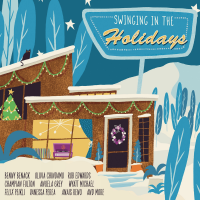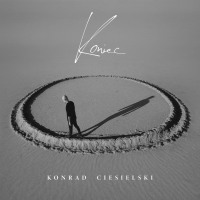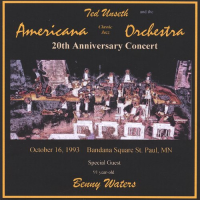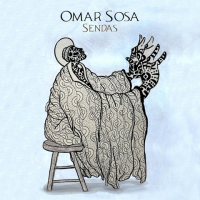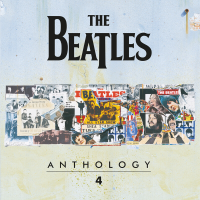Home » Jazz Articles » Extended Analysis » King Crimson: The 21st Century Guide to King Crimson: Vo...
King Crimson: The 21st Century Guide to King Crimson: Volume One 1969-1974
In the intervening years since Frame by Frame , two more incarnations of King Crimson have emerged—the double trio of the mid-'90s and the stripped down double-guitar quartet of the early 21st Century, with a new formation now on its way. And in those years Fripp has also managed to obtain the rights to all material Crimson-related, making it possible to create more comprehensive retrospectives on a band which has, indeed, defined the concept of musical change and evolution. And so we are presented with the first of two new 4-CD sets, The 21st Century Guide to King Crimson: Volume One 1969-1974 , which more fully covers five incarnations of the band, with two disks culled from seven studio recordings and two disks from a variety of live recordings. For long-time committed fans there may be little new to offer, but there are some attractions.
First, the long box packaging, which includes a 22-page booklet that, personnel and track listings aside, provides a diary-like chronology of the band throughout these six years, a comprehensive, informative and, most importantly, contextual history of the band. Second, there is the previously unissued live improvisation from the last incarnation, "Improv: Augsburg," and "Groon," the B-side of their 1970 single release, "Cat Food." Third, and most importantly, the original master tapes of their first album, the epochal In the Court of the Crimson King ('69) have been found and, by including the album in its entirety barring an edited version of "Moonchild," which tended to meander anyway, long-time fans can hear that album with the best sound possible.
Disc one covers the period 1969-1971, and the albums In the Court of the Crimson King ('69), In the Wake of Poseidon ('70), Lizard ('70) and Islands ('71). While fans will, no doubt, question the choice to include an instrumental edit of the title track from In the Wake of Poseidon and the short addendum to Islands called "Tuning Up" (which is literally just that), the disc provides a good cross-section of what early versions of the band were about, from the folksy "I Talk to the Wind" and the melodramatic "Epitaph" to the more thumping rock of "Ladies of the Road," the jazz-inflected improvisation of "Islands (instrumental edit)" and "Sailor's Tale (abridged)," which contains some of Fripp's most fiery and inventive work of the period. The only album which is noticeably short-changed is Lizard , which was always overlooked as a transitional album, perhaps because it was a studio creation that didn't last long enough to be performed live. While "Bolero" is a fine track from side two of that record, the inclusion of "Cirkus," with its haunting mellotron and menacing vocal from bassist Gordon Haskell would have balanced the set out nicely.
Disc two provides a look at live versions of the In the Court of the Crimson King group, circa '69, and the Islands band from '71 and early '72, when the group finally imploded. Sonically speaking, the recordings are of only average quality, but Fripp's contention that King Crimson studio recordings are love letters and their live performances hot dates is supported by the energy found throughout, with notable tracks including an incendiary arrangement of Gustav Holst's "Mars" from the early band, and a metal- meets-jazz-inflected version of "Pictures of a City" from the latter. While the Islands band would ultimately dissolve as bassist Boz Burrell and drummer Ian Wallace leaned more towards funky jams and farther away from the complex arrangements and more progressive leanings of Fripp, they were still capable of sublime beauty combined with earth-shattering weight, as on the live version of "The Letters" found here. Fripp avoids any of the more contentious jam tracks found on source recordings like the inconsistent Earthbound ('72), but as compelling as these performances are, they are equally notable for their almost inherent limited life-span. Neither band could have lasted for long nor, given the ultimate evolution of Fripp's conception, should they have.
Disc three examines the fifth incarnation of the band and, to that point, the most long-lasting one, featuring Fripp, drummer/percussionist Bill Bruford, bassist/vocalist John Wetton and violinist David Cross. Outrageous percussionist Jamie Muir, who could be found swinging chains around the stage and spitting fake blood while dressed in a fur jacket, may have only recorded on the first of the three studio recordings represented here, Larks' Tongues in Aspic ('73), but his influence on Bruford is felt even after leaving the band. The most notable change with the group that released the three studio recordings represented here (more-or-less that is; much of Starless and Bible Black being culled and massaged from a live performance in Amsterdam that was ultimately released in its entirety on the double live set, The Night Watch ('98))—Larks' Tongues in Aspic , Starless and Bible Black ('74) and the classic Red ('75)—is that they were far more aggressive and guitar-centric than earlier versions of the band, a segue that would lead nicely into the '80s incarnation of the band and beyond. While Cross was an adequate player, he was unquestionably second to Fripp, who dominates the disc with unparalleled aplomb.
At this stage the band is somewhat schizophrenic, alternating between monumentally heavy pieces like "Larks' Tongues in Aspic Part II" and "Red," both of which would become staples in future incarnations of the band in the same way that "21st Century Schizoid Man" would be summarily disposed of, and more balladic pieces like "Book of Saturday." But for the most part, this was a heavy band. And Fripp began to experiment with staggeringly complicated experiments for guitar, like the extended piece "Fracture," with the emphasis on through-composition rather than improvisation.
Disc three places fairly equal emphasis on all three records, the only misstep being, perhaps, the inclusion of a heavily-edited version of "Starless" which excises its dramatic single-note solo from Fripp, where the dynamics are built with almost painful gradualness by Bruford and Wetton, a bassist who may not have been the most nimble player but clearly understood the meaning of weight. Still, with the consideration being on construction and composition, disc three demonstrates a band that existed long enough to evolve a sound and concept, something that none of the earlier incarnations had the luxury of affording.
But as much as composition was a critical part of the Crimson oeuvre circa '73-'74, this version of the band, which lasted from '72 through '74, was also about improvisation. In live performance versions of songs like "Lament" from Starless and Bible Black and "Easy Money" from Larks' Tongues in Aspic were liberally interspersed with free and extended instrumental explorations, and it is these that make up over half of disc four, which culls live performances from the official releases USA ('76), The Great Deceiver box set, Starless and Bible Black and The Night Watch as well as one previously unreleased track. From the subtle beauty of "Trio" to the funk of "Asbury Park" and "We'll Let You Know," this was a band that, more than any version that came before, was about risk. Fripp's interspersion of composed and improvised material and its thoughtful sequencing provides a good representation of what a live performance of this band was like at the time.
The good news is that with the exception of the single version of "Groon" and the solitary unreleased live improvisation, everything on The 21st Century Guide to King Crimson: Volume One 1969 -1974 is available on original source recordings, and in some cases in expanded, unedited form. Long-time fans of the group will be most attracted to the new and improved sound of In the Court of the Crimson King , but this compilation will be of most value to new listeners, who want a way into a large body of work without spending a fortune. Attractively priced, comprehensive and a solid representation of how the band evolved so rapidly in the space of six short years, The 21st Century Guide to King Crimson: Volume One 1969-1974 is the perfect entry point. And with all of Crimson's archival studio albums now available in 30th Anniversary Remastered editions, and a bevy of live recordings available as well, relatively new listeners, fans who have only become aware of the group through more recent recordings including The ConstruKction of Light ('00) and The Power to Believe ('03) can either become selective buyers like some, picking up the older material that appeals to them the most, or become pathological collectors like others, and begin collecting it all.
Track Listing
CD1 (In the Studio: 1969-1971): 21st Century Schixoid Man; I Talk to the Wind;
Epitaph; Moonchild; The Court of the Crimson King; Peace: A Theme; Cat Food; Groon; Cadence
and Cascade; In the Wake of Poseidon (instrumental edit); Ladies of the Road; Sailor's Tale
(abridged); Islands (instrumental edit); Tuning Up; Bolero.
CD2 ( Live: 1969-1972): The Court of the Crimson King; A Man, A City;
21st Century Schizoid Man; Get Thy Bearings; Mars; Pictures of a City; The Letters; A Sailor's
Tale; Groon; 21st Century Schizoid Man (instrumental edit).
CD3 ( In the Studio: 1972-1974): Larks' Tongues in Aspic Part I
(abridged); Book of Saturday; Easy Money; Larks' Tongues in Aspic Part II; The Night Watch; The
Great Deceiver; Fracture; Starless (abridged); Red; Fallen Angel; One More Red Nightmare.
CD4 (Live: 1973-1974): Asbury Park; The Talking Drum; Larks' Tongues
in Aspic Part II; Lament; We'll Let You Know; Improv: Augsburg; Exiles (abridged); Easy Money;
Providence; Starless and Bible Black; 21st Century Schizoid Man; Trio.
Personnel
King Crimson
band / ensemble / orchestraRobert Fripp
guitarIan McDonald
multi-instrumentalistGreg Lake
bassMichael Giles
drumsPeter Sinfield
lyricistPeter Giles
bassKeith Tippett
pianoMel Collins
saxophoneGordon Haskell
bass, electricIan Wallace
drumsHarry Miller
bassDavid Cross
violinJohn Wetton
bassBill Bruford
drumsCollective Personnel: Robert Fripp: guitar, mellotron, devices; Ian McDonald : reeds, woodwind, vibes, keyboards, mellotron, vocals; Greg Lake: bass guitar, lead vocals; Michael Giles : drums, percussion, vocals; Peter Sinfield: words, illumination, sound and vision; Peter Giles: bass; Keith Tippett: piano; Mel Collins: saxophones, flute, mellotron; Gordon Haskell: bass, vocal; Andy McCullough : drums; Robin Miller: oboe, cor anglais; Mark Charig: cornet; Nick Evans: trombone; Boz Burrell: bass, vocal; Ian Wallace: drums; Harry Miller: string bass; David Cross: violin, viola, mellotron; John Wetton : bass, keyboards, vocals; Jamie Muir: percussion and allsorts; Bill Bruford: drums, percussion.
Album information
Title: The 21st Century Guide to King Crimson: Volume One 1969-1974 | Year Released: 2004 | Record Label: DGM Live
Tags
About King Crimson
Instrument: Band / ensemble / orchestra
PREVIOUS / NEXT
Support All About Jazz
 All About Jazz has been a pillar of jazz since 1995, championing it as an art form and, more importantly, supporting the musicians who make it. Our enduring commitment has made "AAJ" one of the most culturally important websites of its kind, read by hundreds of thousands of fans, musicians and industry figures every month.
All About Jazz has been a pillar of jazz since 1995, championing it as an art form and, more importantly, supporting the musicians who make it. Our enduring commitment has made "AAJ" one of the most culturally important websites of its kind, read by hundreds of thousands of fans, musicians and industry figures every month.





















